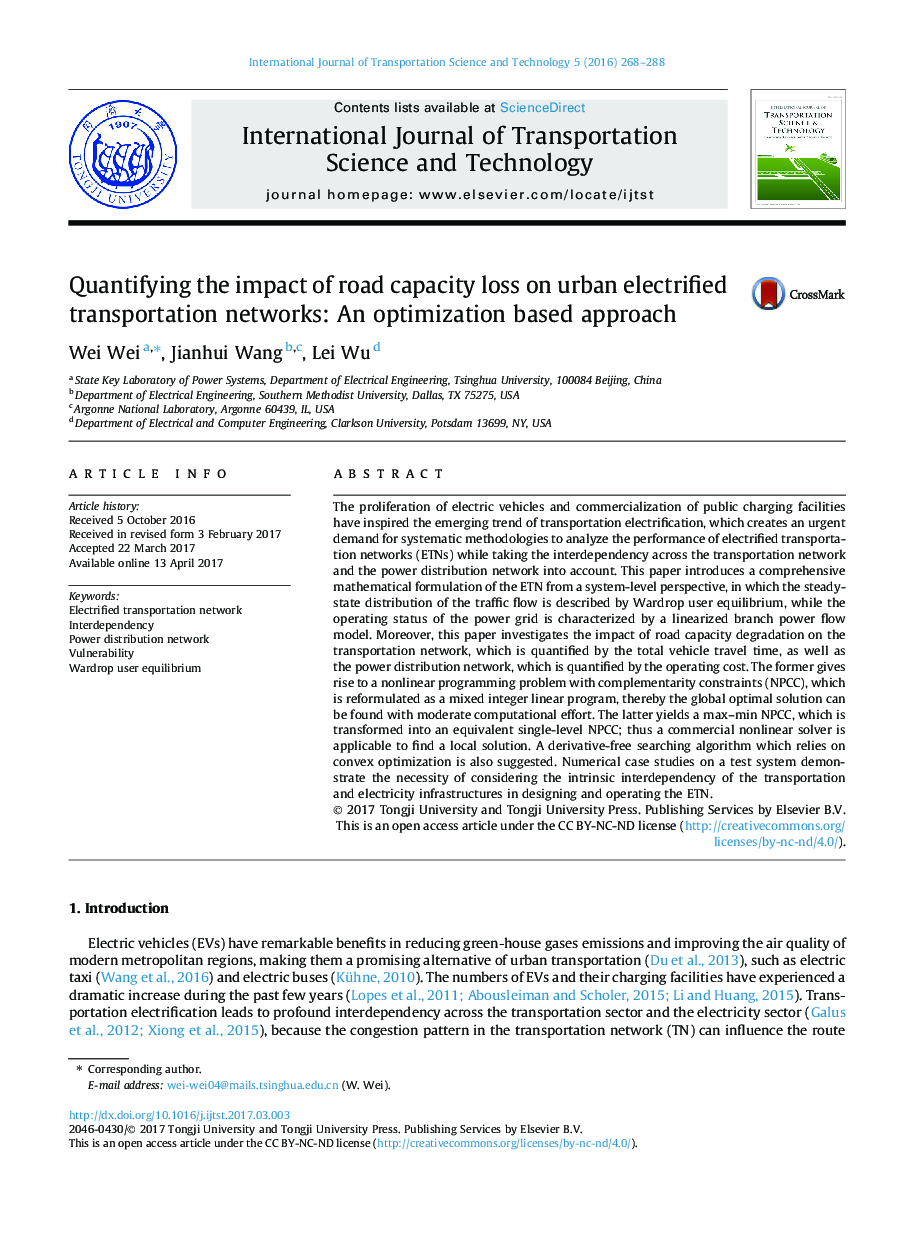| Article ID | Journal | Published Year | Pages | File Type |
|---|---|---|---|---|
| 4922903 | International Journal of Transportation Science and Technology | 2016 | 21 Pages |
The proliferation of electric vehicles and commercialization of public charging facilities have inspired the emerging trend of transportation electrification, which creates an urgent demand for systematic methodologies to analyze the performance of electrified transportation networks (ETNs) while taking the interdependency across the transportation network and the power distribution network into account. This paper introduces a comprehensive mathematical formulation of the ETN from a system-level perspective, in which the steady-state distribution of the traffic flow is described by Wardrop user equilibrium, while the operating status of the power grid is characterized by a linearized branch power flow model. Moreover, this paper investigates the impact of road capacity degradation on the transportation network, which is quantified by the total vehicle travel time, as well as the power distribution network, which is quantified by the operating cost. The former gives rise to a nonlinear programming problem with complementarity constraints (NPCC), which is reformulated as a mixed integer linear program, thereby the global optimal solution can be found with moderate computational effort. The latter yields a max-min NPCC, which is transformed into an equivalent single-level NPCC; thus a commercial nonlinear solver is applicable to find a local solution. A derivative-free searching algorithm which relies on convex optimization is also suggested. Numerical case studies on a test system demonstrate the necessity of considering the intrinsic interdependency of the transportation and electricity infrastructures in designing and operating the ETN.
